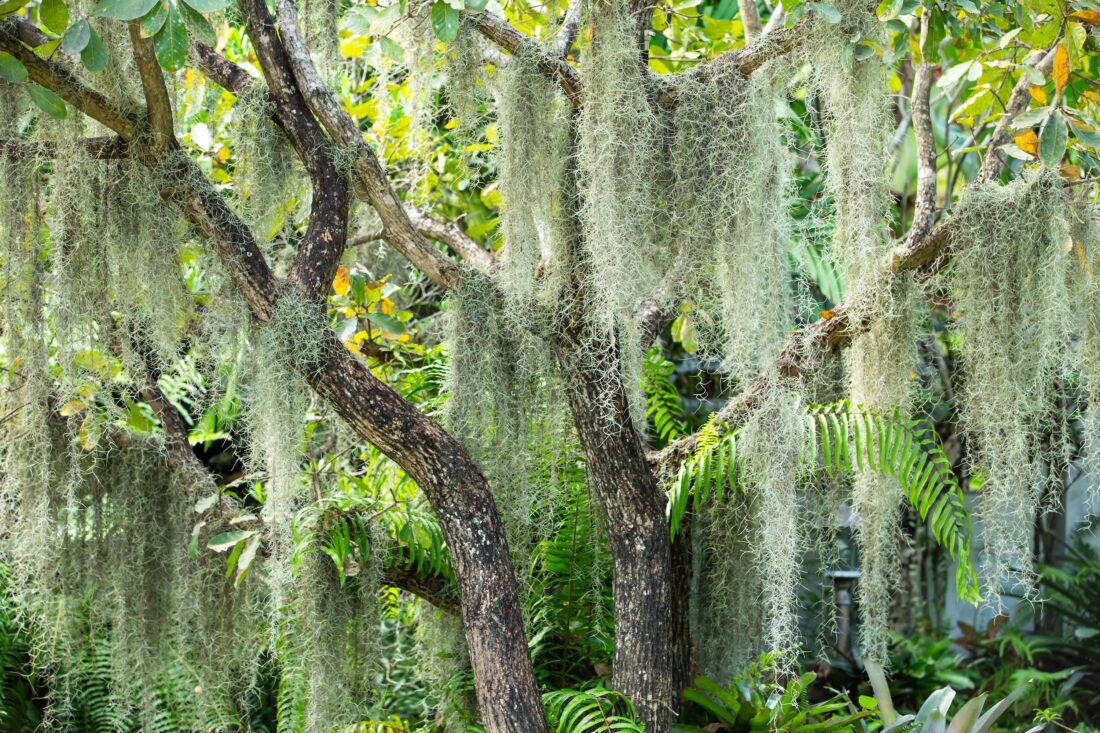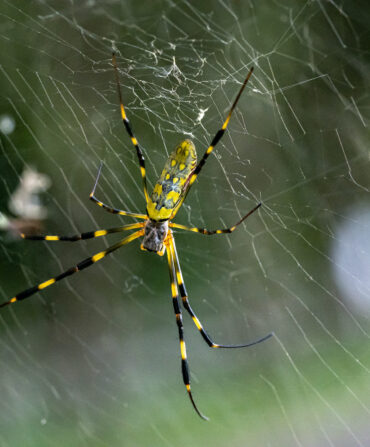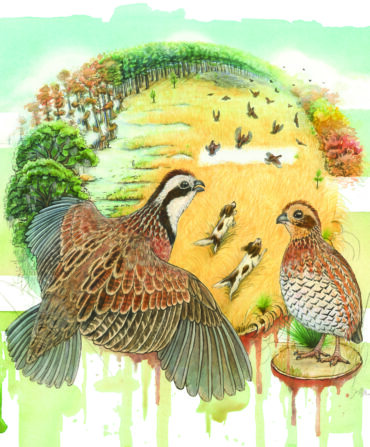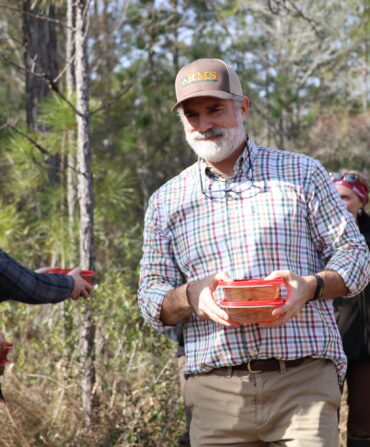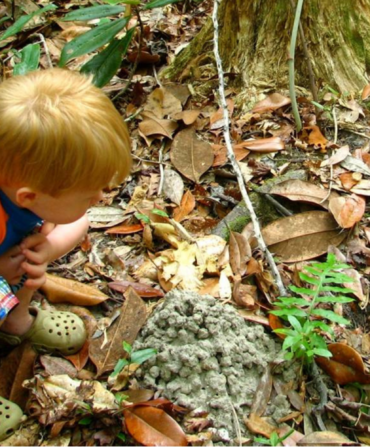There is no more quintessential Southern sight than that of an ancient live oak or cypress tree dripping with Spanish moss. And yet your grandma probably told you to stay away from the dangly stuff because it’s infested with chiggers and other undesirables.
My grandma also told me that if I swung too high on the swing set I would fall up into the sky and never come down. So I asked an expert to spill the dirty secrets of Spanish moss. “Most of us in the Southeast take Spanish moss for granted,” said Marc Frank, extension botanist at the University of Florida Herbarium, part of the Florida Museum of Natural History. And then he dropped a series of mind-blowing facts about this insanely cool air plant.
Let’s start with the basic ecology.
Spanish moss is neither Spanish nor a moss. Instead, it’s a member of the bromeliad family (which, weirdly, also includes pineapples), and unlike other bromeliads (including pineapples) it is stringy and gray and looked enough like the beards of Spanish conquistadors that it earned its misleading moniker, the story goes. It is abundant throughout the lowlands of the southern United States, from southeastern Virginia to Texas, and down through Mexico and Central America into South America, excluding the Amazon basin, which has so many other epiphytes that a beard on a tree didn’t catch on.
“People are often concerned that Spanish moss is a parasite,” Frank says. “But it uses trees strictly for support, which allows it to access more sunlight and better exposure to pollinators.” (Yes, it blooms; more on that below.) Being a simple parasite would be lame compared to how it actually makes a living: Spanish moss is covered in little gray scales—actually tiny, flattened, sponge-like hairs on its leaves called trichomes—that absorbs moisture and the nutrients it contains.
In the spring, Spanish moss produces petite, green, night-fragrant flowers that are likely pollinated by moths. The seeds bear tufts of hairs for wind dispersal a la dandelions. These freewheeling seeds collide with trees and embed in their bark to germinate. (They like rough, textured bark, which explains why you don’t see the moss on, say, beech trees.) “Starting off, a plant is just a couple sets of leaves,” Frank says. “But it keeps adding more, branching out and growing like a daisy chain. When the conditions are right, they can grow for years and years.”
You might be wondering if I’m ever going to address the question about whether Spanish moss has chiggers. When it’s in the trees, probably not. But when it’s on the ground? “Chiggers are ground-dwelling insects, so when Spanish moss falls on the ground because of wind or squirrels knocking it down, there’s a very high likelihood that it could have them,” Frank says.
That’s not to say Spanish moss hanging in trees doesn’t host a whole world of other things. “As prolific as it is, Spanish moss plays a role in a lot of lives,” he says. “Mosquitos, spiders, all different types of insects, small lizards, birds, and bats use it to hide, rest, and as nesting material.” Humans also used it as nesting material; for a hot minute in the late nineteenth and early twentieth centuries, Spanish moss was all the rage for stuffing pillows and cushions. (Your grandma’s grandma and her compatriots knew about the bugs, and might have used a process called “retting” to eliminate them.)
I don’t know if all of that information makes you feel better or worse. If Spanish moss is on the ground, it could be teeming with mites, but at least the bat that was hanging out in there will have flown out?
So your grandma wasn’t wrong, but she wasn’t exactly right either. If she were to read this article she would probably still tell you to stay away from Spanish moss—but hopefully with a greater appreciation for how lucky we are to have it adorning our landscapes and sheltering our wildlife.
Next, I am going to try swinging as high as I can on a swingset to see if I fall up into the sky and never come down. More likely, I, like Spanish moss, will end up slung over a tree branch.


